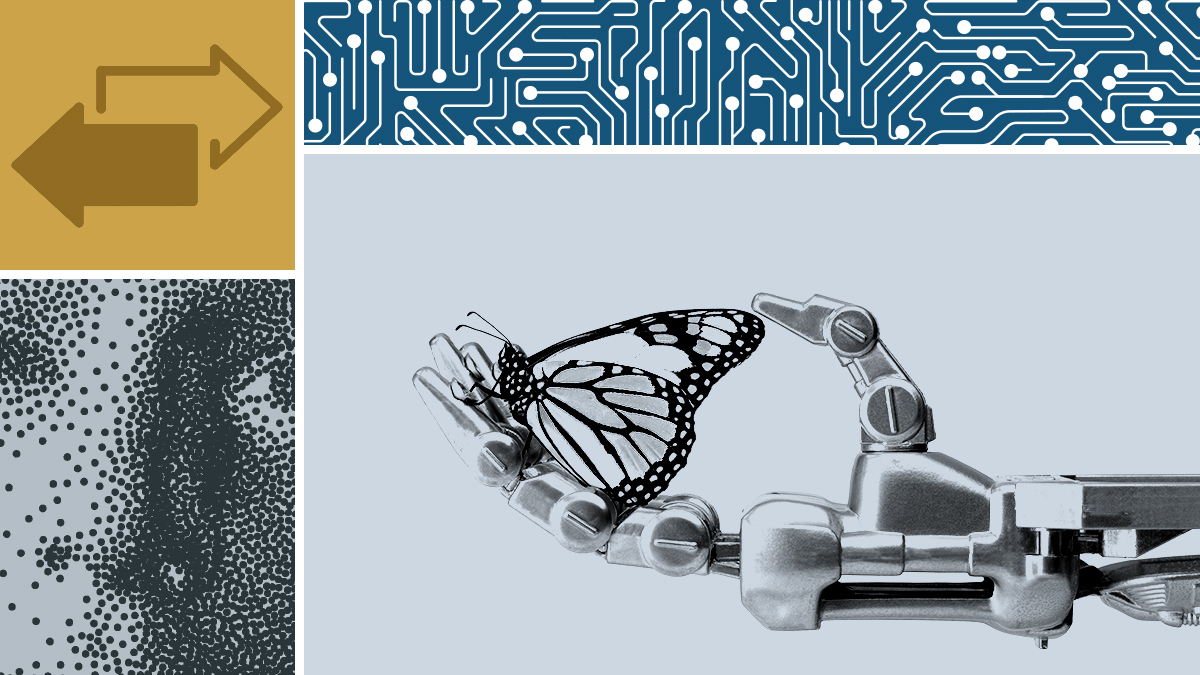Innovation and Technology
Breaking Down Barriers: How Technology is Enabling Inclusive Hiring Practices

The future of work innovations is rapidly changing the way we approach hiring, and technology is at the forefront of this revolution. Gone are the days of traditional, time-consuming, and often biased hiring processes. Today, technology is breaking down barriers, enabling companies to find, attract, and hire the best talent from a diverse pool of candidates. In this article, we’ll explore the ways in which technology is transforming the hiring landscape, making it more inclusive and efficient.
The Rise of AI-Powered Hiring Tools
One of the most significant advancements in the hiring process is the adoption of AI-powered tools. These innovative solutions are designed to streamline the hiring process, reducing the time spent on manual screening and increasing the accuracy of candidate selection. AI-powered tools can analyze resumes, cover letters, and social media profiles to identify top talent, while also reducing bias and unconscious biases.
The Benefits of AI-Powered Hiring Tools
- Faster Time-to-Hire: AI-powered tools can significantly reduce the time spent on manual screening, allowing companies to fill positions quickly and efficiently.
- Increased Accuracy: AI algorithms can analyze vast amounts of data, reducing the risk of human error and increasing the accuracy of candidate selection.
- Reduced Bias: AI-powered tools can identify and eliminate bias, ensuring that the most qualified candidate is selected, regardless of their background or demographics.
The Power of Virtual Interviews
Another significant shift in the hiring process is the rise of virtual interviews. With the advancement of video conferencing technology, companies can now conduct interviews from anywhere in the world, breaking down geographical barriers and making it possible to connect with top talent globally.
The Benefits of Virtual Interviews
- Global Reach: Virtual interviews enable companies to connect with candidates from all over the world, accessing a global talent pool.
- Increased Flexibility: Virtual interviews can be conducted at any time, from anywhere, making it easier for companies to find the best talent.
- Cost Savings: Virtual interviews eliminate the need for travel, reducing costs and increasing efficiency.
Inclusive Job Descriptions and Language
Language and jargon can often be a barrier to inclusive hiring. To overcome this, companies are now using inclusive job descriptions and language to attract a wider range of candidates. This includes using gender-neutral language, avoiding stereotypical job descriptions, and including language that reflects the company’s diversity and inclusion values.
The Benefits of Inclusive Job Descriptions and Language
- Wider Candidate Pool: Inclusive job descriptions and language attract a broader range of candidates, increasing the diversity of the talent pool.
- Increased Employee Engagement: When job descriptions and language reflect the company’s values, it increases employee engagement and sense of belonging.
- Better Representation: Inclusive language and job descriptions promote better representation, ensuring that diverse voices are heard and valued.
Conclusion
The future of work innovations is all about breaking down barriers, and technology is at the forefront of this revolution. AI-powered hiring tools, virtual interviews, and inclusive job descriptions and language are just a few of the ways in which companies are transforming the hiring process, making it more efficient, accurate, and inclusive. By embracing these innovations, companies can access a global talent pool, increase diversity, and attract the best candidates, ultimately driving business success.
FAQs
Q: What are some examples of AI-powered hiring tools?
A: Some examples of AI-powered hiring tools include:
- Recruitment software that uses machine learning to analyze resumes and cover letters
- Chatbots that assist with initial screening and candidate selection
- AI-powered interview evaluation software that assesses candidate skills and qualifications
Q: What are some benefits of virtual interviews?
A: Some benefits of virtual interviews include:
- Global reach and access to a global talent pool
- Increased flexibility and cost savings
- Reduced carbon footprint
- Ability to conduct interviews at any time, from anywhere
Q: How can I write an inclusive job description?
A: To write an inclusive job description, consider the following tips:
- Use gender-neutral language
- Avoid stereotypical job descriptions
- Use language that reflects the company’s diversity and inclusion values
- Be clear about the job requirements and responsibilities
- Use keywords and phrases that are relevant to the job and industry
Note: This is a sample article, please make necessary changes according to your requirements.
Innovation and Technology
FBI Warns of Skyrocketing Cyberattacks

Introduction to the Play Ransomware Threat
The Federal Bureau of Investigation has issued a joint cybersecurity advisory in conjunction with the U.S. Cybersecurity and Infrastructure Security Agency, as the number of confirmed observed victims of Play ransomware attacks skyrocketed in May. The threat actors have, the FBI warned, impacted victims covering a broad spectrum of organisations, including businesses as well as critical infrastructure providers, in both North and South America, as well as across Europe.
FBI And CISA Say Act Now As Play Ransomware Actors Accelerate Attacks
As part of a joint effort between the FBI, CISA and the Australian Cyber Security Centre, the latest update to the Play ransomware cybersecurity advisory comes as result of new investigations this year that have uncovered an evolution of the cybercriminal group’s tactics, techniques and procedures. In May, the FBI confirmed that it had become aware of 900 organizations that had been exploited by the crime gang and had fallen victim to the Play ransomware attacks. To put that in some perspective, it is three times the number when the FBI last released such information.
The joint critical cybersecurity advisory, which forms part of the ongoing Stop Ransomware campaign, aims to help organizations best defend themselves against attacks by keeping them informed of changes to the aforementioned tactics, techniques, and procedures, as well as new indicators of compromise that can be useful in attack detection efforts.
Advisory AA23-352A warned that Play is thought to be what is known as a closed ransomware group actor, acting alone to “guarantee the secrecy of deals” when it comes to the exfiltrated data that is held to ransom. The ransom notes that are left with the victim do not, the advisory stated, “include an initial ransom demand or payment instructions; rather, victims are instructed to contact the threat actors via email.” Those emails have one of two German email domains, but the actual email address is unique in every case. “A portion of victims are contacted via telephone,” the FBI said, “and are threatened with the release of the stolen data and encouraged to pay the ransom.” These tactics are designed to lead the victim straight onto a negotiation footing where the attacker has the upper hand.
Inside The Play Ransomware Threat — The FBI Confirms Technical Details Of Attacks
Thought to be linked to a North Korean state-sponsored attack group, one that is known to be part of the Democratic People’s Republic of Korea’s “Reconnaissance General Bureau,” known as Andariel, Play ransomware is thought to be distributed by threat groups including Balloonfly. Researchers have expressed the opinion that Play forms an “integral part” of the Andariel cyberattack arsenal.
Using a malware backdoor to infect Windows systems, Balloonfly has been linked to multiple incidents involving the deployment of Play ransomware, according to Symantec Threat Hunter researchers, mostly against businesses across the U.S. and Europe.
The Microsoft Threat Intelligence Center and Microsoft Security Response Center previously found Play ransomware being deployed after threat actors used a zero-day security vulnerability in the Windows Common Log File System. That vulnerability, CVE-2025-29824, was mitigated by the April Patch Tuesday release. Other vulnerabilities, that have been known to have been exploited by the Play ransomware attackers, have included CVE-2022-41040 and CVE-2022-41082, which affected Microsoft Exchange Server, and CVE-2020-12812 and CVE-2018-13379 impacting Fortinet’s FortiOS. All of which have been patched, but it bears repeating that if you haven’t patched these yet, you need to do so as a matter of some critical urgency.
The FBI security advisory also confirmed that Play ransomware attackers are gaining initial access by exploiting “external-facing services such as Remote Desktop Protocol and Virtual Private Networks.” Once inside a network, Play ransomware actors move laterally by employing well-known command and control applications such as Cobalt Strike and SystemBC, alongside tools including PsExec. “Once established on a network, the ransomware actors search for unsecured credentials and use the Mimikatz credential dumper to gain domain administrator access,” The FBI warned.
FBI Says You Must Act Now To Mitigate These Attacks
The Play ransomware campaign shows no sign of slowing down. For that to happen, organizations need to up their game and get their defenses in order. Erecting mitigation barricades is the only answer to such determined ransomware actors.
The FBI has recommended the following mitigating actions to be taken as a matter of some urgency:
- A recovery plan that includes the retention of multiple copies of data and servers in segregated and separate secure locations.
- Secure password management policies, with passwords of at least 15 characters in length and stored in a hashed and salted format.
- No password reuse.
- No password hints.
- Multiple password failure lockdowns.
- Multi-factor authentication for all accounts.
- Admin credentials should be required to install software.
- Patching and firmware updates must be applied in a timely manner.
- Network segmentation can prevent the spread of ransomware, so apply it.
- Disable all unused ports.
- Disable links in all incoming emails.
- Disable command-line and scripting activities and permissions.
Conclusion
The threat posed by Play ransomware is very real and organizations must take immediate action to protect themselves. By following the mitigating actions recommended by the FBI, organizations can significantly reduce the risk of falling victim to these attacks. It is essential to stay vigilant and keep up to date with the latest information and guidance on this evolving threat.
FAQs
Q: What is Play ransomware?
A: Play ransomware is a type of malware that is used to extort money from organizations by encrypting their data and demanding a ransom in exchange for the decryption key.
Q: How does Play ransomware spread?
A: Play ransomware is thought to be distributed by threat groups including Balloonfly, and is often spread through the exploitation of vulnerabilities in external-facing services such as Remote Desktop Protocol and Virtual Private Networks.
Q: What can organizations do to protect themselves from Play ransomware?
A: Organizations can protect themselves by following the mitigating actions recommended by the FBI, including implementing a recovery plan, secure password management policies, and multi-factor authentication, as well as keeping software and systems up to date with the latest patches and firmware updates.
Q: What is the impact of Play ransomware on organizations?
A: The impact of Play ransomware on organizations can be severe, resulting in the loss of sensitive data, disruption to business operations, and significant financial costs.
Q: Is Play ransomware linked to any specific threat actors?
A: Yes, Play ransomware is thought to be linked to a North Korean state-sponsored attack group, known as Andariel.
Innovation and Technology
From Pilots to Platform: Scaling Your Digital Transformation Efforts

Are you implementing digital transformation strategies to stay ahead in the competitive market? In this comprehensive guide, we’ll explore the journey of scaling digital transformation efforts from pilot projects to a full-fledged platform. From identifying the need for digital transformation to executing a successful strategy, these insights will help you navigate the complexities of digital transformation and achieve your business goals.
Understanding Digital Transformation
Digital transformation is the integration of digital technology into all areas of a business, fundamentally changing how it operates and delivers value to customers. It’s a cultural shift that requires organizations to be more agile, innovative, and customer-centric. Digital transformation involves leveraging technologies like cloud computing, artificial intelligence, and the Internet of Things (IoT) to create new business models, products, and services.
Why Digital Transformation Matters
In today’s digital age, businesses must adapt to changing customer expectations, technological advancements, and market trends. Digital transformation enables organizations to stay competitive, improve efficiency, and drive growth. It helps businesses to better understand their customers, create personalized experiences, and develop innovative solutions to meet their needs.
Assessing Your Digital Maturity
Before embarking on a digital transformation journey, it’s essential to assess your organization’s digital maturity. This involves evaluating your current digital capabilities, identifying gaps, and determining the level of digital literacy within your organization. A digital maturity assessment helps you understand where you stand and what you need to do to achieve your digital transformation goals.
Conducting a Digital Maturity Assessment
A digital maturity assessment typically involves evaluating your organization’s digital strategy, technology infrastructure, data management, customer engagement, and innovation capabilities. It helps you identify areas of strength and weakness, providing a roadmap for digital transformation. The assessment should be conducted by a cross-functional team, including IT, marketing, sales, and operations, to ensure a comprehensive understanding of your organization’s digital landscape.
Building a Digital Transformation Strategy
A well-defined digital transformation strategy is crucial for success. It should align with your business goals, identify key initiatives, and outline the resources required to execute the strategy. A digital transformation strategy should be flexible, adaptable, and focused on delivering value to customers.
Key Components of a Digital Transformation Strategy
A digital transformation strategy should include several key components, such as a clear vision and mission, a detailed roadmap, and a set of key performance indicators (KPIs). It should also identify the technologies and platforms required to support digital transformation, such as cloud computing, artificial intelligence, and data analytics. The strategy should be communicated to all stakeholders, including employees, customers, and partners, to ensure everyone is aligned and working towards the same goals.
Executing a Digital Transformation Strategy
Executing a digital transformation strategy requires a structured approach, including planning, piloting, and scaling. It’s essential to start with small pilot projects, test and refine your approach, and then scale up to larger initiatives. This approach helps you build momentum, gain traction, and demonstrate the value of digital transformation to stakeholders.
Scaling Digital Transformation Efforts
Scaling digital transformation efforts requires a platform-based approach, where you build a foundation for digital transformation and then scale up to meet the needs of your organization. This involves creating a digital platform that integrates people, processes, and technology, enabling you to deliver digital products and services quickly and efficiently. The platform should be flexible, scalable, and secure, supporting multiple digital channels and touchpoints.
Overcoming Digital Transformation Challenges
Digital transformation is a complex and challenging journey, requiring significant investment, leadership commitment, and cultural change. Common challenges include resistance to change, lack of digital literacy, and insufficient resources. To overcome these challenges, it’s essential to communicate the benefits of digital transformation, provide training and development opportunities, and allocate sufficient resources to support digital transformation initiatives.
Change Management and Digital Transformation
Change management is critical to digital transformation success. It involves communicating the need for change, building a sense of urgency, and creating a vision for the future. Change management helps you build a culture of innovation, agility, and continuous improvement, enabling your organization to adapt to changing market conditions and customer expectations.
Measuring Digital Transformation Success
Measuring digital transformation success requires a set of key performance indicators (KPIs) that align with your business goals. Common KPIs include customer engagement, revenue growth, and operational efficiency. It’s essential to track and measure these KPIs regularly, providing insights into the effectiveness of your digital transformation strategy and identifying areas for improvement.
Using Data Analytics to Inform Digital Transformation
Data analytics plays a critical role in informing digital transformation decisions. It helps you understand customer behavior, preferences, and needs, enabling you to create personalized experiences and develop targeted marketing campaigns. Data analytics also provides insights into operational efficiency, helping you identify areas for improvement and optimize business processes.
Conclusion
In conclusion, scaling digital transformation efforts from pilot projects to a full-fledged platform requires a structured approach, including planning, piloting, and scaling. It’s essential to build a digital platform that integrates people, processes, and technology, enabling you to deliver digital products and services quickly and efficiently. By following the insights and strategies outlined in this guide, you can navigate the complexities of digital transformation and achieve your business goals.
Frequently Asked Questions (FAQs)
What is digital transformation?
Digital transformation is the integration of digital technology into all areas of a business, fundamentally changing how it operates and delivers value to customers.
Why is digital transformation important?
Digital transformation enables organizations to stay competitive, improve efficiency, and drive growth. It helps businesses to better understand their customers, create personalized experiences, and develop innovative solutions to meet their needs.
How do I assess my organization’s digital maturity?
A digital maturity assessment involves evaluating your organization’s digital strategy, technology infrastructure, data management, customer engagement, and innovation capabilities. It helps you understand where you stand and what you need to do to achieve your digital transformation goals.
What are the key components of a digital transformation strategy?
A digital transformation strategy should include a clear vision and mission, a detailed roadmap, and a set of key performance indicators (KPIs). It should also identify the technologies and platforms required to support digital transformation, such as cloud computing, artificial intelligence, and data analytics.
How do I scale digital transformation efforts?
Scaling digital transformation efforts requires a platform-based approach, where you build a foundation for digital transformation and then scale up to meet the needs of your organization. This involves creating a digital platform that integrates people, processes, and technology, enabling you to deliver digital products and services quickly and efficiently.
Innovation and Technology
How to Innovate in Times of Disruption

Innovating during disruption is about finding opportunities in chaos and turning them into advantages. Disruptions, whether they come from technological advancements, economic shifts, or global health crises, can either hinder businesses or serve as catalysts for innovation. The ability to innovate during these times is crucial for companies looking to not only survive but thrive in a rapidly changing environment.
Understanding Disruption
Disruption can come in many forms. It can be a sudden change in market trends, the emergence of new technologies that make existing products or services obsolete, or unforeseen events like natural disasters or pandemics. Understanding the nature of the disruption is key to innovating effectively. It involves analyzing the impact of the disruption on the business, identifying areas that are most affected, and recognizing opportunities that arise from the chaos.
Identifying Opportunities in Disruption
Identifying opportunities involves a deep understanding of the market, the customer, and the capabilities of the organization. It requires a mindset shift from seeing disruption as a threat to viewing it as a chance to innovate and lead. Companies that successfully innovate during disruption often do so by leveraging existing strengths, exploring new technologies, and focusing on customer needs that have arisen due to the disruption.
Embracing Digital Transformation
One of the most significant opportunities for innovation during disruption is digital transformation. This involves leveraging digital technologies to change business models, improve operations, and enhance customer experiences. Digital transformation can help companies become more agile, responsive to customer needs, and better equipped to handle future disruptions.
Strategies for Innovating During Disruption
Several strategies can be employed to innovate during disruption. These include:
- Agile Innovation: Adopting agile methodologies to quickly develop and test new ideas.
- Customer-Centric Approach: Focusing on customer needs and pain points that have emerged due to the disruption.
- Collaboration and Partnerships: Working with other companies, startups, or academia to leverage their expertise and technologies.
- Experimentation: Encouraging a culture of experimentation to test new ideas and learn from failures.
Role of Leadership
Leadership plays a critical role in driving innovation during disruption. Leaders must foster a culture of innovation, provide the necessary resources, and encourage experimentation and risk-taking. They must also be adept at making strategic decisions quickly, often with incomplete information, and be willing to pivot when necessary.
Overcoming Challenges
Innovating during disruption comes with its own set of challenges. These can include resistance to change from within the organization, limited resources, and the difficulty of predicting outcomes in a highly uncertain environment. Overcoming these challenges requires strong leadership, a clear vision, and the ability to communicate the value of innovation to all stakeholders.
Managing Risk and Uncertainty
Managing risk and uncertainty is crucial when innovating during disruption. This involves assessing potential risks, developing mitigation strategies, and being prepared to adapt plans as circumstances change. It also requires a mindset that views failure as an opportunity to learn and improve.
Conclusion
Innovating during disruption is not just about survival; it’s about leveraging change to drive growth, improve customer satisfaction, and establish a leadership position in the market. By understanding the nature of disruption, identifying opportunities, embracing digital transformation, and employing effective strategies, companies can turn challenges into advantages. Leadership, culture, and the ability to manage risk and uncertainty are key factors in successful innovation during disruption. As the business landscape continues to evolve, the ability to innovate in the face of disruption will become an increasingly important skill for companies looking to thrive.
FAQs
- Q: What is innovating during disruption?
A: Innovating during disruption involves finding opportunities in chaotic situations and turning them into advantages through innovation. - Q: How can companies identify opportunities in disruption?
A: By analyzing the impact of the disruption, recognizing new customer needs, and leveraging existing strengths and new technologies. - Q: What role does digital transformation play in innovating during disruption?
A: Digital transformation can help companies become more agile, improve operations, and enhance customer experiences, making them better equipped to handle disruptions. - Q: Why is leadership important for innovating during disruption?
A: Leadership is crucial for fostering a culture of innovation, making strategic decisions, and encouraging experimentation and risk-taking. - Q: How can companies manage risk and uncertainty when innovating during disruption?
A: By assessing potential risks, developing mitigation strategies, and being prepared to adapt plans as circumstances change.
-

 Career Advice6 months ago
Career Advice6 months agoInterview with Dr. Kristy K. Taylor, WORxK Global News Magazine Founder
-

 Diversity and Inclusion (DEIA)6 months ago
Diversity and Inclusion (DEIA)6 months agoSarah Herrlinger Talks AirPods Pro Hearing Aid
-

 Career Advice6 months ago
Career Advice6 months agoNetWork Your Way to Success: Top Tips for Maximizing Your Professional Network
-

 Changemaker Interviews5 months ago
Changemaker Interviews5 months agoUnlocking Human Potential: Kim Groshek’s Journey to Transforming Leadership and Stress Resilience
-

 Diversity and Inclusion (DEIA)6 months ago
Diversity and Inclusion (DEIA)6 months agoThe Power of Belonging: Why Feeling Accepted Matters in the Workplace
-

 Global Trends and Politics6 months ago
Global Trends and Politics6 months agoHealth-care stocks fall after Warren PBM bill, Brian Thompson shooting
-

 Global Trends and Politics6 months ago
Global Trends and Politics6 months agoUnionization Goes Mainstream: How the Changing Workforce is Driving Demand for Collective Bargaining
-

 Training and Development6 months ago
Training and Development6 months agoLevel Up: How Upskilling Can Help You Stay Ahead of the Curve in a Rapidly Changing Industry









